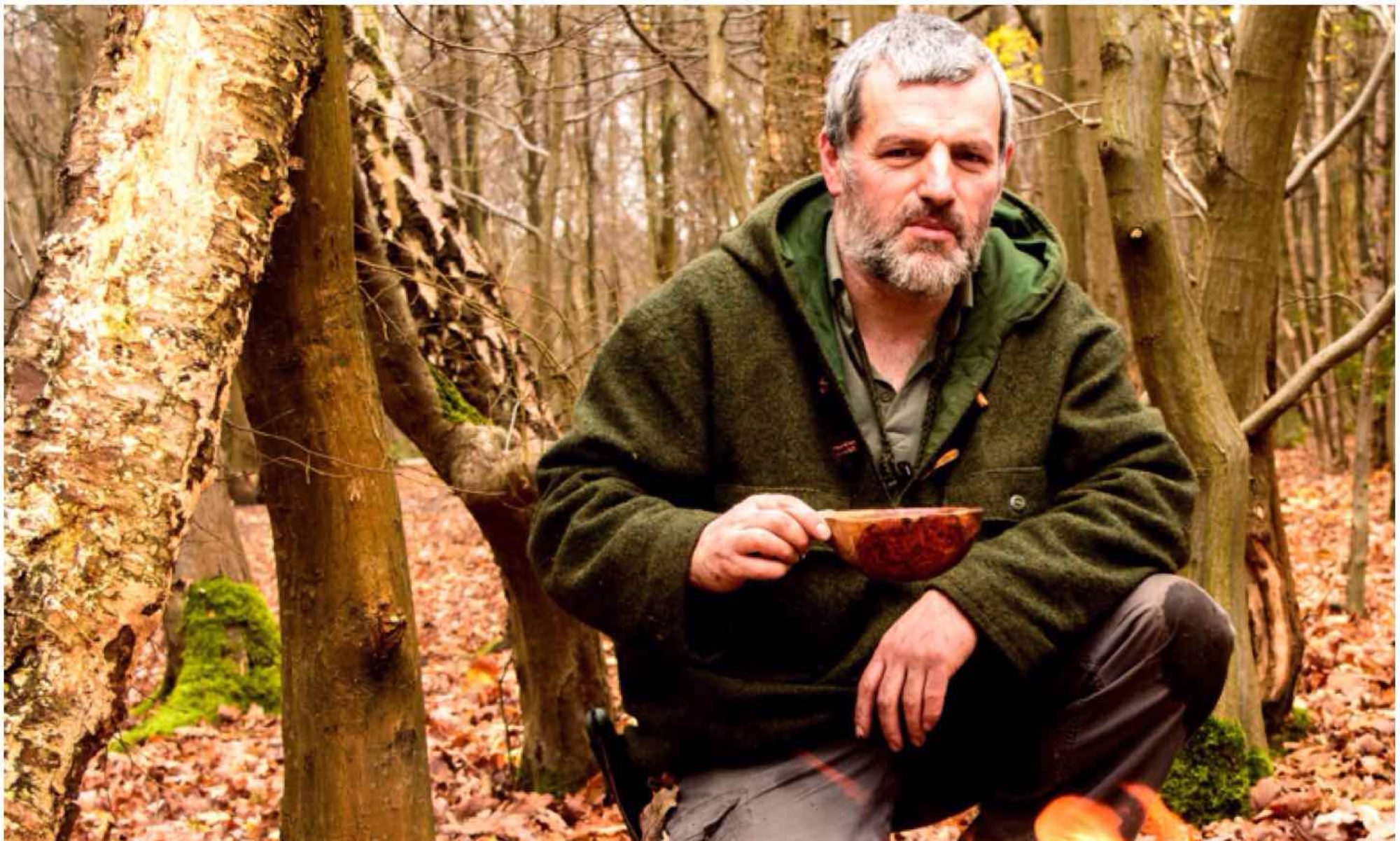After the day was finished I was really struck by how many of the skills I practice under the title of bushcraft were being practiced on a daily basis on the Isle of Lewis just a few generations ago
My brother Finlay has been attending Lews Castle College on the Isle of Lewis off and on now for a number of years and I was privileged recently to be asked along for a day to teach him and his fellow students some bushcraft skills. They have a great horticulture area at the college with some impressive greenhouses growing a wide range of plants. Finlay loves working with plants and the college has provided him a good place over the years to develop his skills.
The current course he is attending is called Grow2Work and its aim is to instil a work ethic within the students, giving them confidence and building their self esteem. The students develop a number of skills, such as working as part of a team and following instructions by spending time planting, harvesting vegetables and strimming plants.
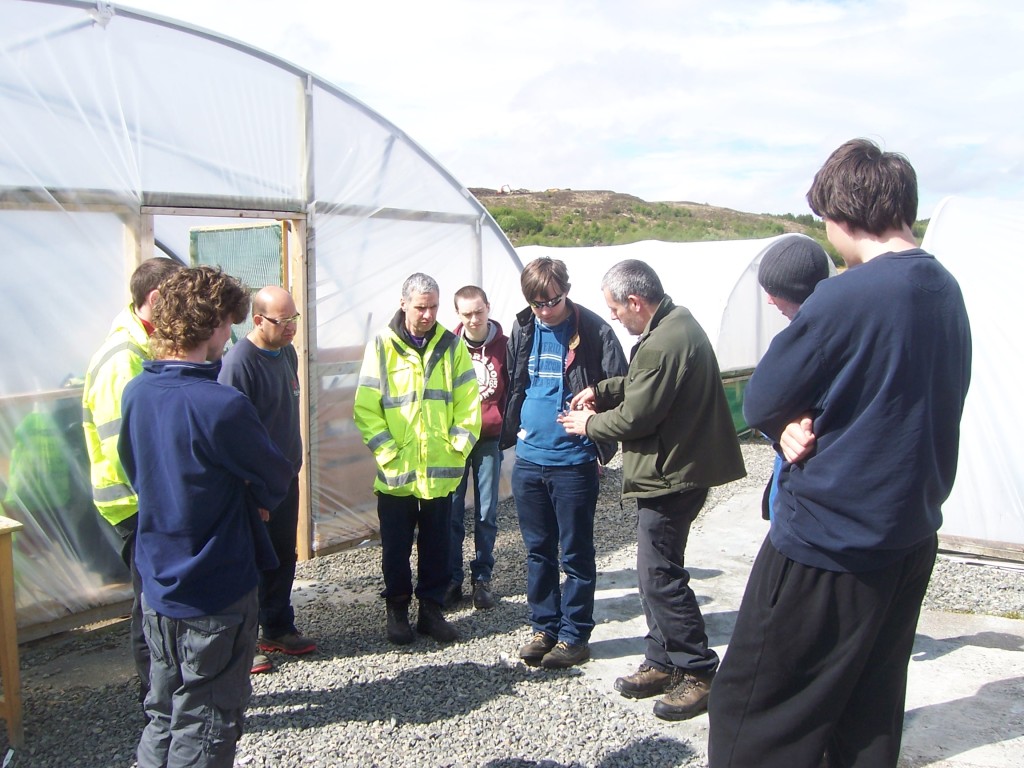
My Grandmother Mary passed away earlier in May this year and while I was up on the island for the funeral my sister Tina had a chat with the course director, John Maclean, and mentioned that I did teaching around wild plants and bushcraft skills. Unknown to me, Tina had volunteered me to do a day’s bushcraft tuition for the whole of Finlay’s class when I was next up at the end of May on holiday to the island with my family.
I found out eventually I was doing the course and so, not really knowing what I was going to do with it, packed an extra bag full of bushcraft and survival kit. I fully expected to have half my kit confiscated at the airport but miraculously the security folk let it all through. If I had been asked to open it up I would have been hard pressed to explain myself.
I had been asked to run the course on the Monday so I managed to do a recce of the castle grounds woodland to find good teaching areas. While I was doing this with the kids my wife Alison ran the Stornoway half marathon. I shot this little video of the day recceing the woods and supporting Alison.
I spent a lot of time as a teenager exploring these woods around the castle and it did feel rather strange to be coming back to teach bushcraft skills in one of the places that my passion for the art started.
Monday morning arrived: I went off to Stornoway with Finlay Mhor (Big Finlay – my brother) and with Finlay Bheag (Little Finlay – my son). I met the rest of Finlay’s class – Murdo, Matthew, Alistair, Josh, Mark, and John – and the tutors John and David. We had a good chat about what we could do and ended up agreeing to spending some time:
- making nettle cordage
- identifying some of the wild plants growing around the site
- setting up a tarp and hammock to learn some bushcraft knots
- trying out some different fire lighting techniques
- and finally shooting some Atlatl darts in the wood.
There were a few nettles growing around the edges of the gardens so after putting on some gloves I got the guys to pick some to make some cordage. I explained that it was thought the nettle was introduced to the British Isles by the Romans as a method of producing linen or as a method of keeping warm (urtification).
In Scotland historically nettle was used to make scotch cloth; the poet Thomas Campbell wrote in some of his letters, “In Scotland, I have eaten nettles, I have slept in nettle sheets, and I have dined off a nettle tablecloth. The young and tender nettle is an excellent potherb. The stalks of the old nettle are as good as flax for making cloth. I have heard my mother say that she thought nettle cloth more durable than any other species of linen.”
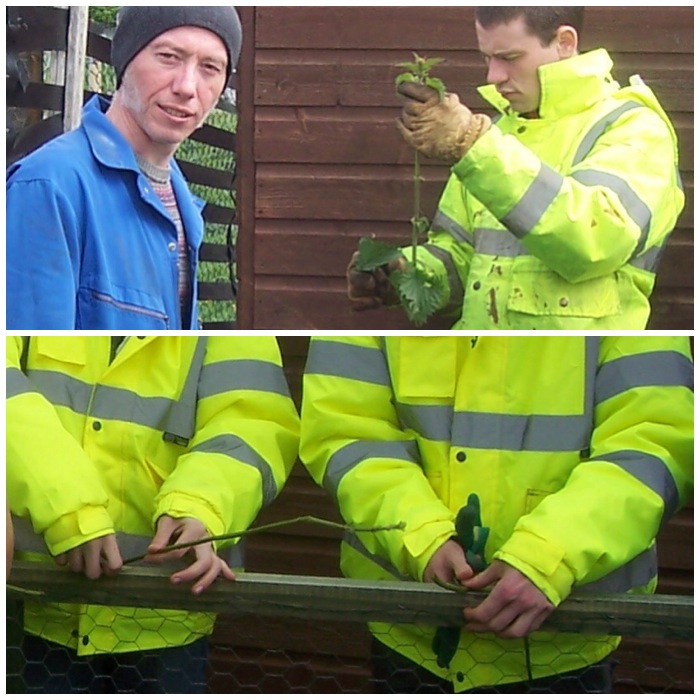
After picking the nettles the guys stripped off the leaves and crushed all the nodules in the stalks to make them easier to split open. Nettle cordage would have been made on the island in the past as it has been common on the island for centuries. I got the class to split open the stalks of the nettles along the full length of the stems and then pulled out the hard pithy core to leave long strips of the outer nettle fibre.
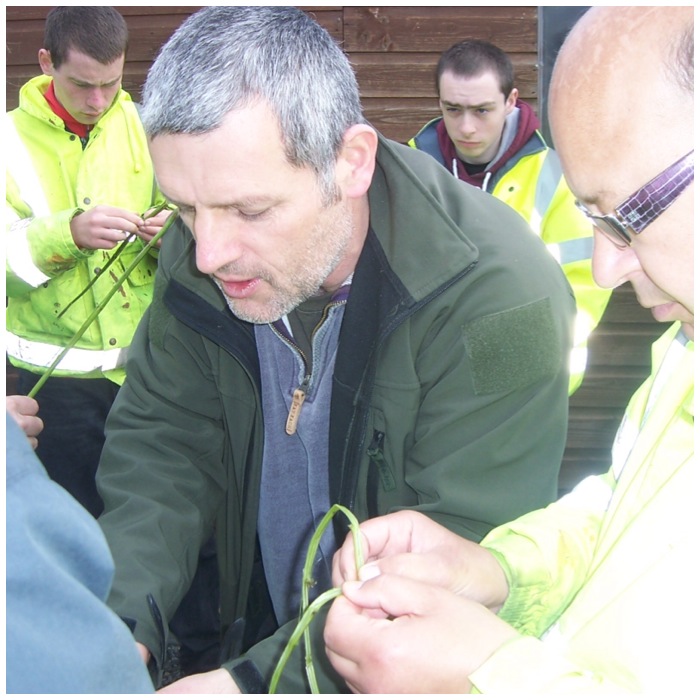
We then wrapped the nettles into short strips of cordage. The guys liked this as they could see how they could easily make cordage from nettles in their garden if they did not have any modern cordage to hand.
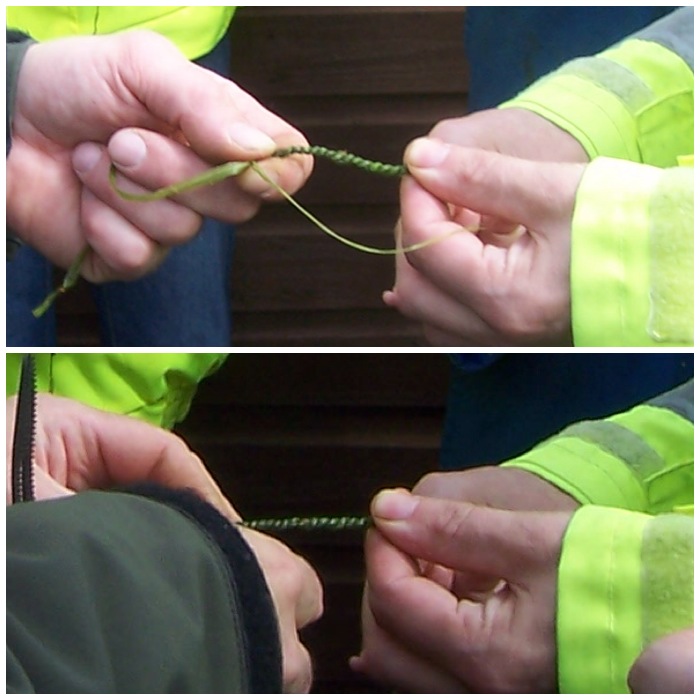
After making the nettle cordage we went for a walk up into the woods. On the way we stopped to chat about many of the wild plants growing around the college. One of the common plants was the Silverweed. I explained this plant was a staple food in Scotland prior to the introduction of potatoes in the 1500s and was known as Seachdamh Aran (the Seventh Bread). It was thought that a man could sustain himself for a year on a patch of silverweed the square of his own height. In North Uist during the clearances, homeless folk were said to be living on shellfish and on bread made from dried silverweed roots. A good document on this can be found on the BBC website.
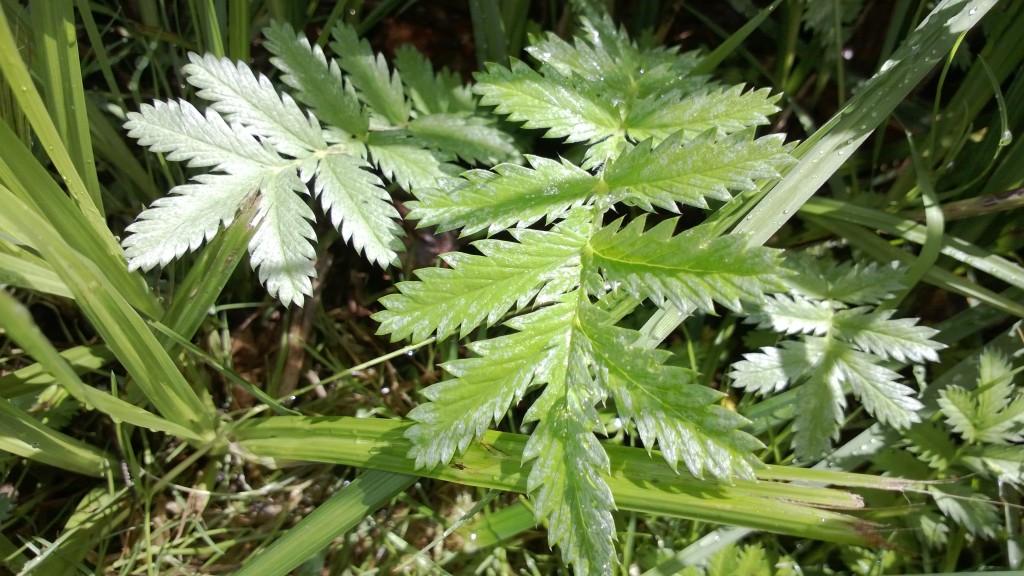
After talking about some other plants including comfrey, thistle and some different types of trees, we set ourselves up a little camp. This was to show the class some of the hammocks and tarps I use when bushcrafting. They were all keen to try out the hammocks. I had brought along two types of hammocks. One was the EDC Chair hammock and the other was the Woodsman hammock. Both hammocks are made by my friend Mat Howes of UK Hammocks. After setting up the hammocks we set up a tarp and practised some knots, including the Evenk, the Tarp Taught and the Clove Hitch.
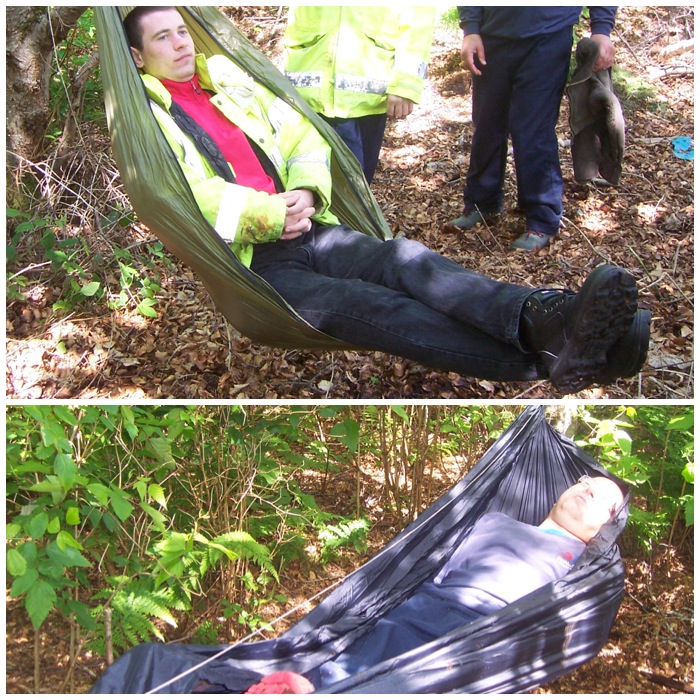
After lunch it was on with the business of making fire. We had already made fire by using a parabolic mirror earlier that morning using the sun’s rays – not often you can do that on the Isle of Lewis. Although I used a modern mirror this technique has recently been shown to have been used for thousands of years – World’s Oldest Solar Device.
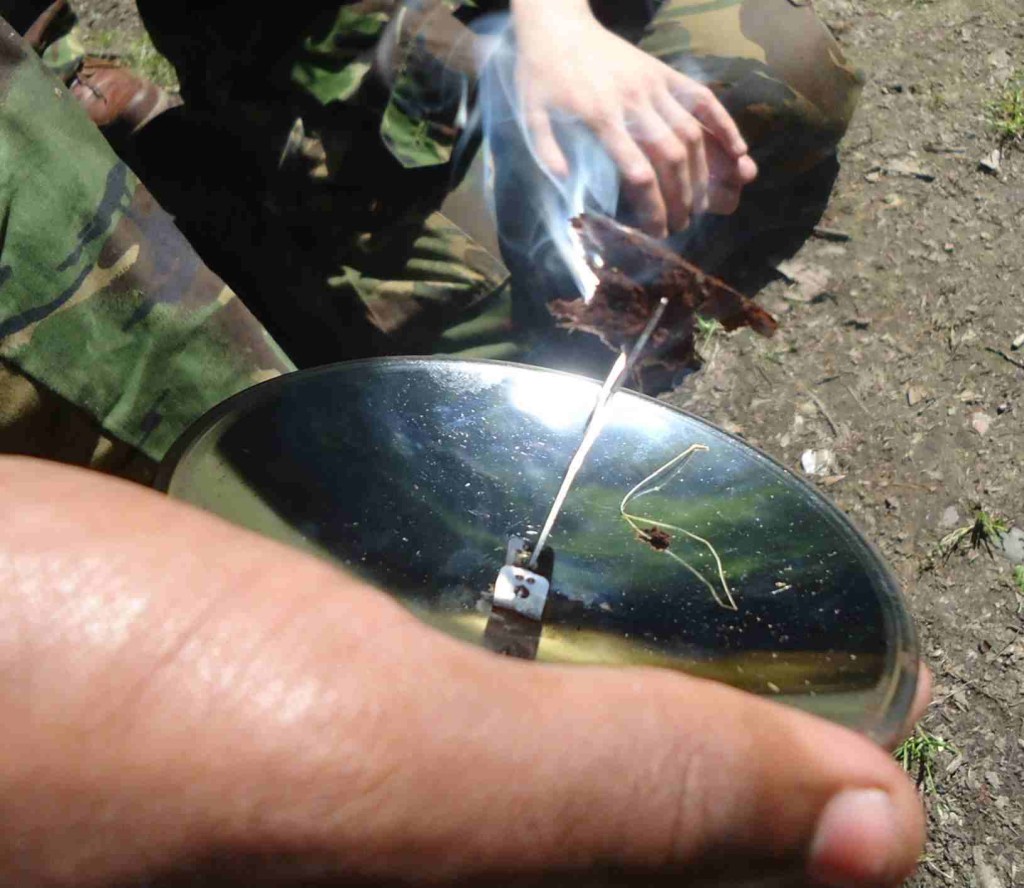
We decided for safety to light our fires on a patch of concrete within the nursery area (normally I would use raised fire pits for this). I taught the class how to use modern firesteels at first and they soon had sparks going strong.
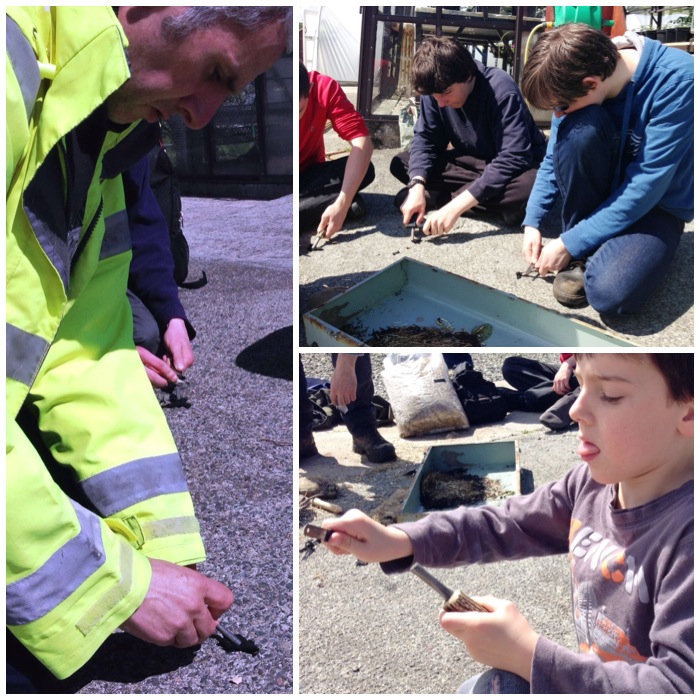
My son Finlay got in on the act as well and everyone was able to light up some cotton wool balls in no time. I have to say a big thank you to my wee boy Finlay as he was the perfect student all day, getting stuck in with all the others.
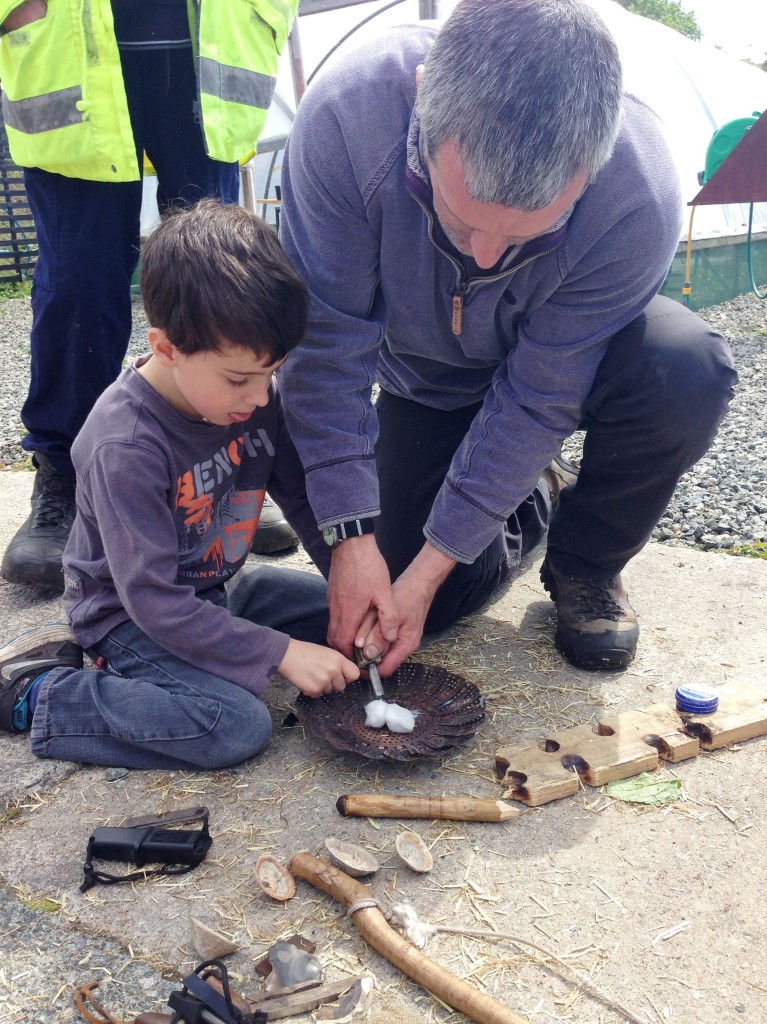
After the cotton wool balls I got the class to catch some sparks onto some char cloth that we then popped into some hay.
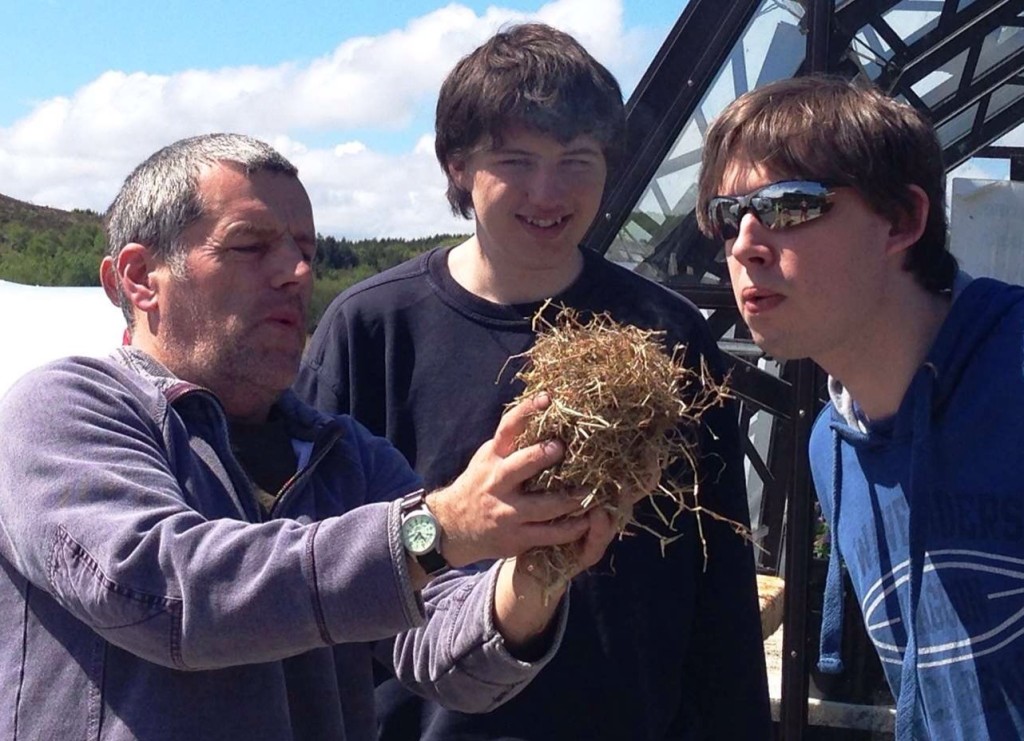
Everyone was happy when we got that first tinder bundle burning happily.
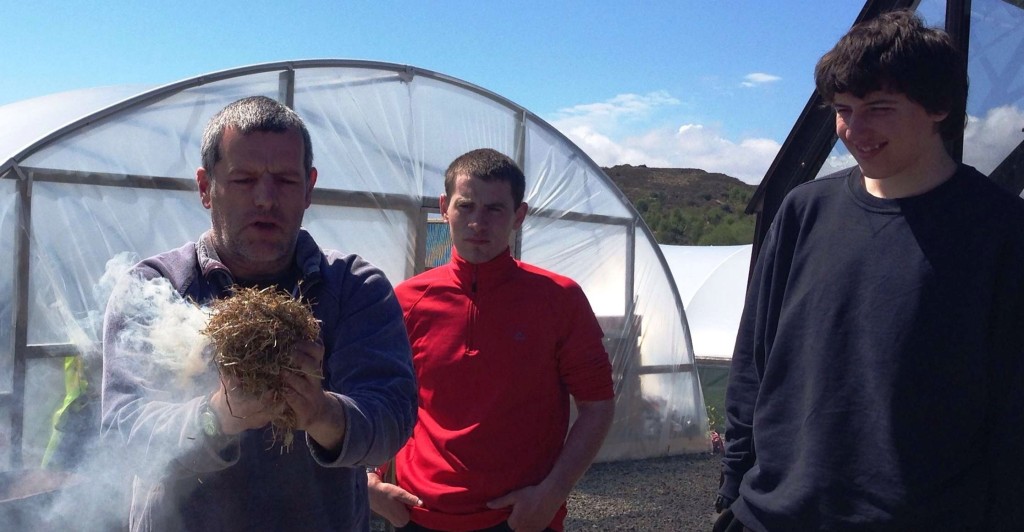
After the firesteels it was time to make some Lucky Fire, sometimes known as the Beltane, the Need fire or Forced Fire on the islands. In Gaelic it is called teine eigin (translates as ‘fire from rubbing sticks together’). Bushcrafters normally call this skill the Bowdrill but what is not commonly known is that this method of fire lighting was used in Scotland in some places to light fires up until the middle of the 19th century.
I doubled up with each of the guys to give them a feel for how it worked but due to a lack of time could not teach them to do this on their own. The wood was lovely and dry due to the sunny day and we soon had some good coals going.
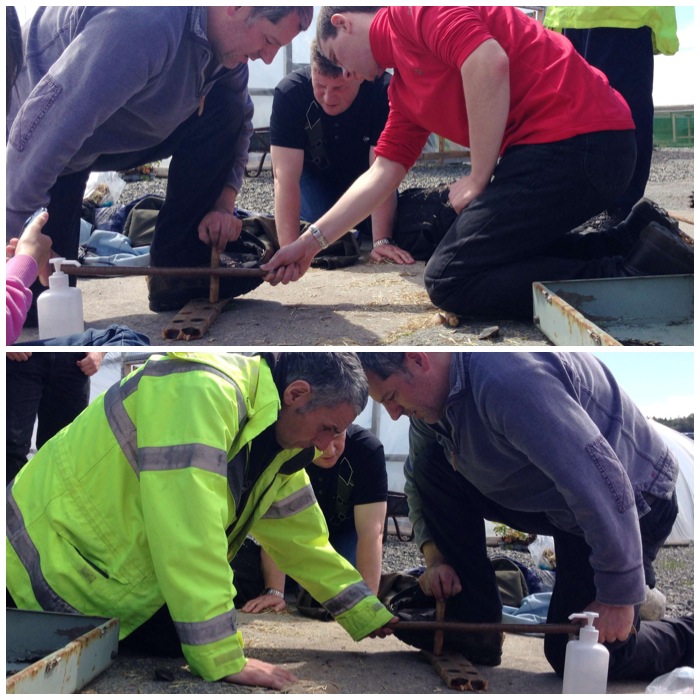
As we were bowdrilling I explained how this technique had been used on the islands until very recently and it would have been quite likely that some of their recent ancestors had used this technique to light a fire. After getting a few coals we popped one into a tinder bundle and started blowing that into flame.
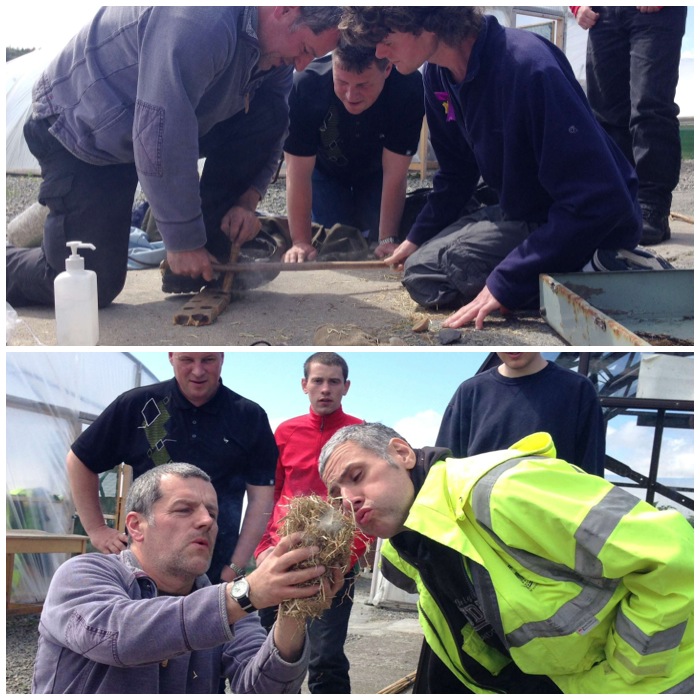
Everyone was keen to be involved in all parts of the process of making fire.
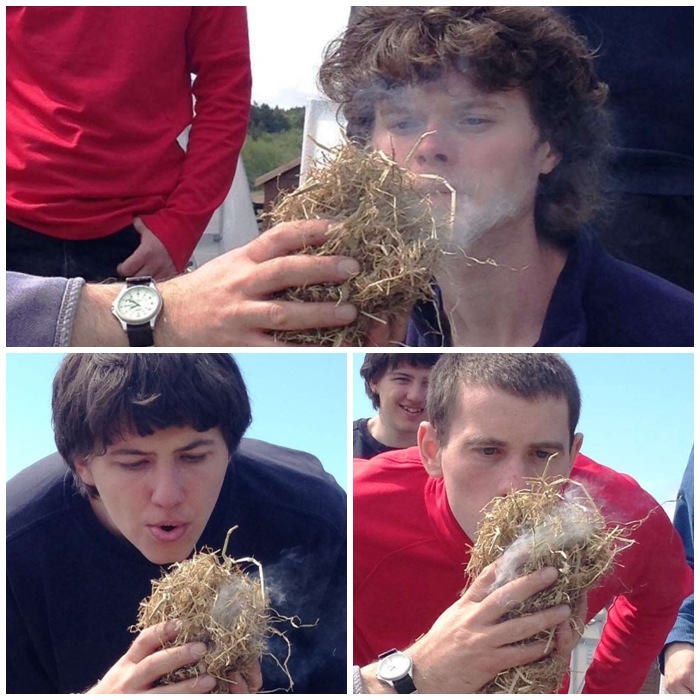
Even the boss John got involved and before we knew it we had flame again 🙂
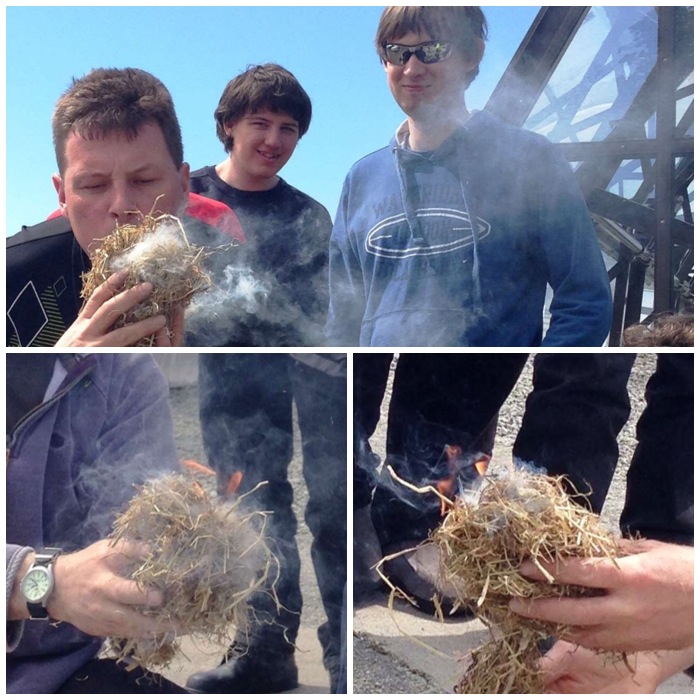
As we could not keep the fire going because of the college safety rules all I could do with the class was to explain at this point how they would go about building their fire up so it became self sustaining.
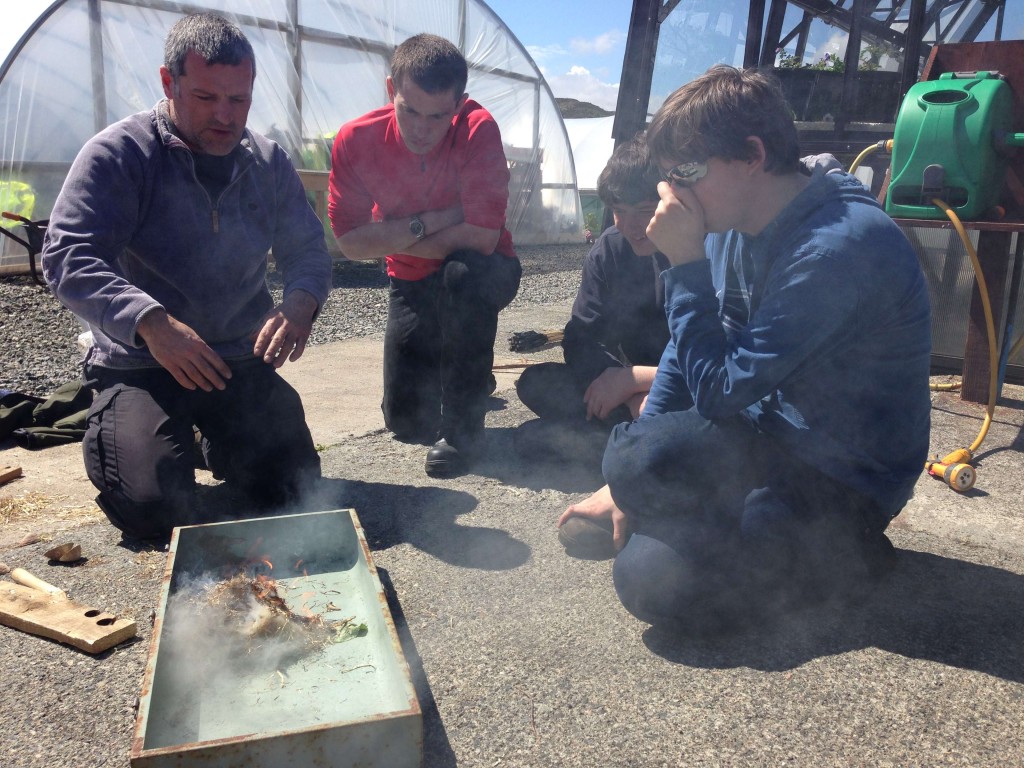
The final activity was to get the Atlatl darts out. I could not bring any with me on the plane so I just bought some bamboo canes locally and made flights out of tape. All in all the set cost me about £6.
After a bit of tuition to each pair it was time to do some shooting.
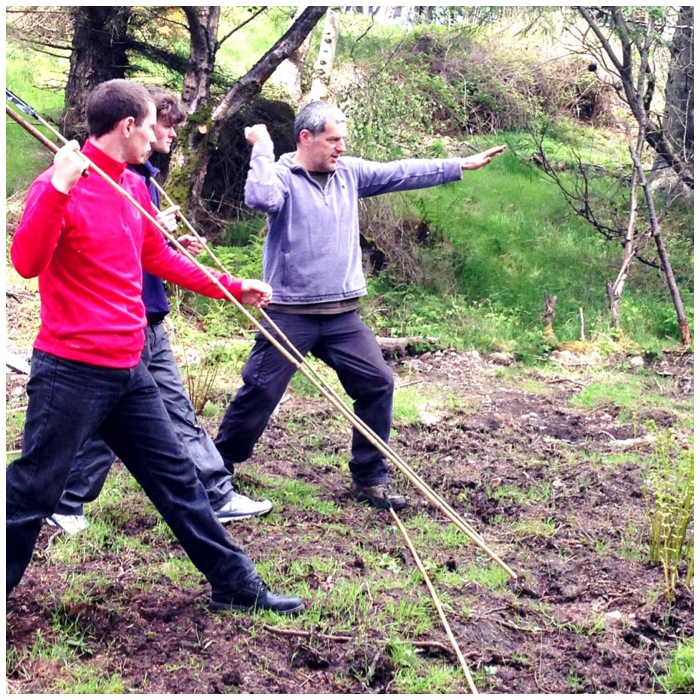
In no time they were getting the hang of it. We did though have to move our target (thanks for your ingenuity here John) as some golfers had lost a ball and were searching for it in scrubland near the target.
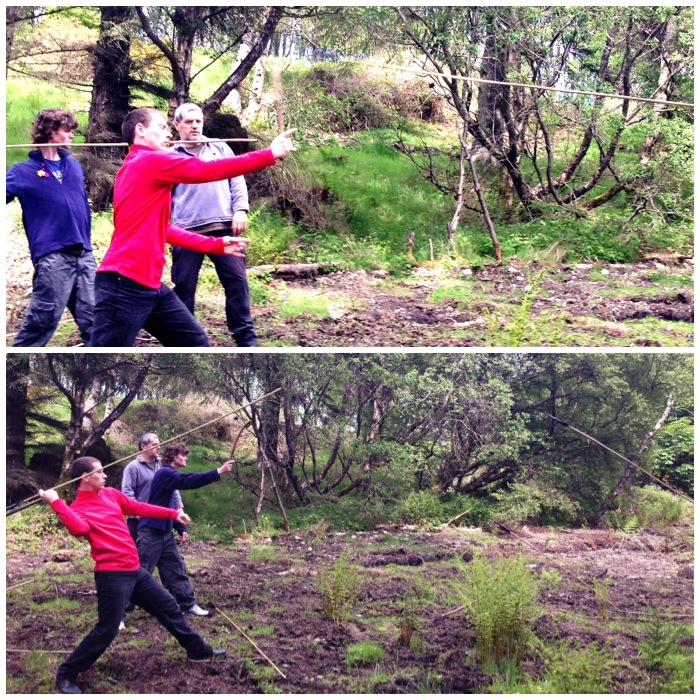
I think John is a possible convert to the Atlatl by the look of the concentration on his face.
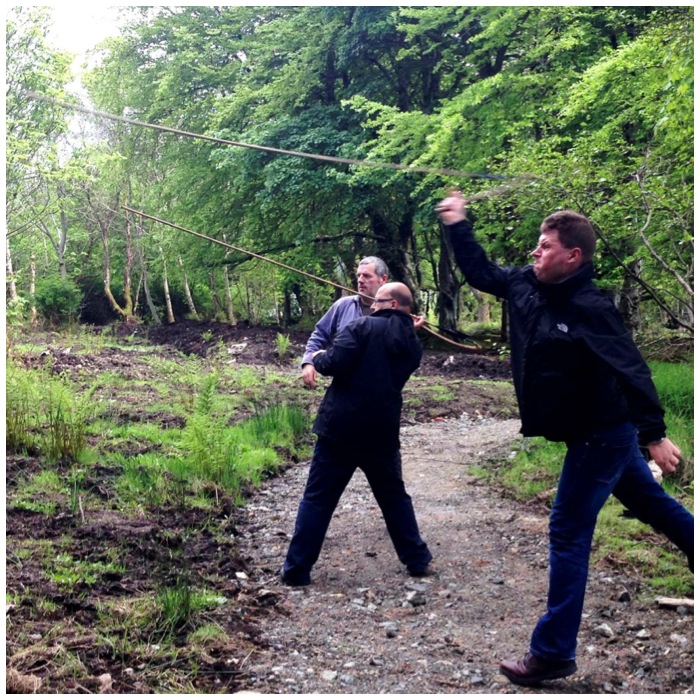
I really enjoyed teaching my brother Finlay to use the Atlatl.
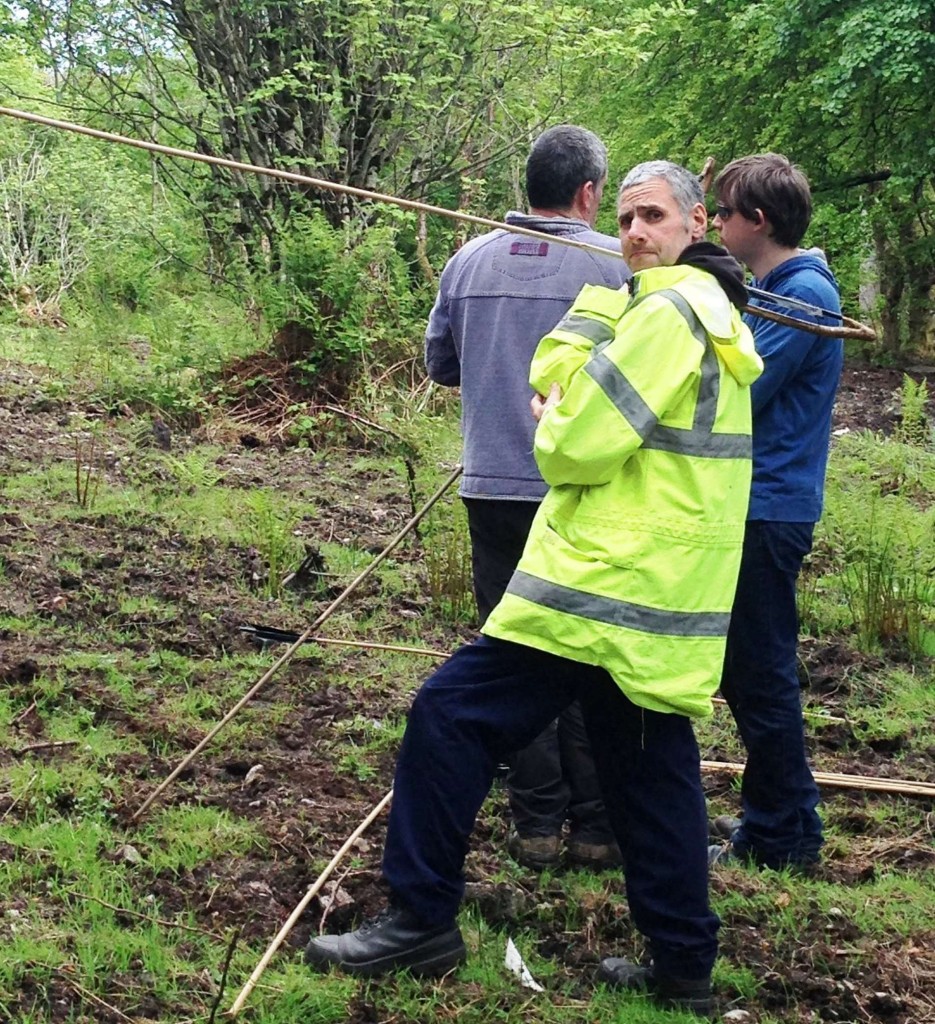
In the end they all got the hang of it and were happy to be chucking darts down the range.
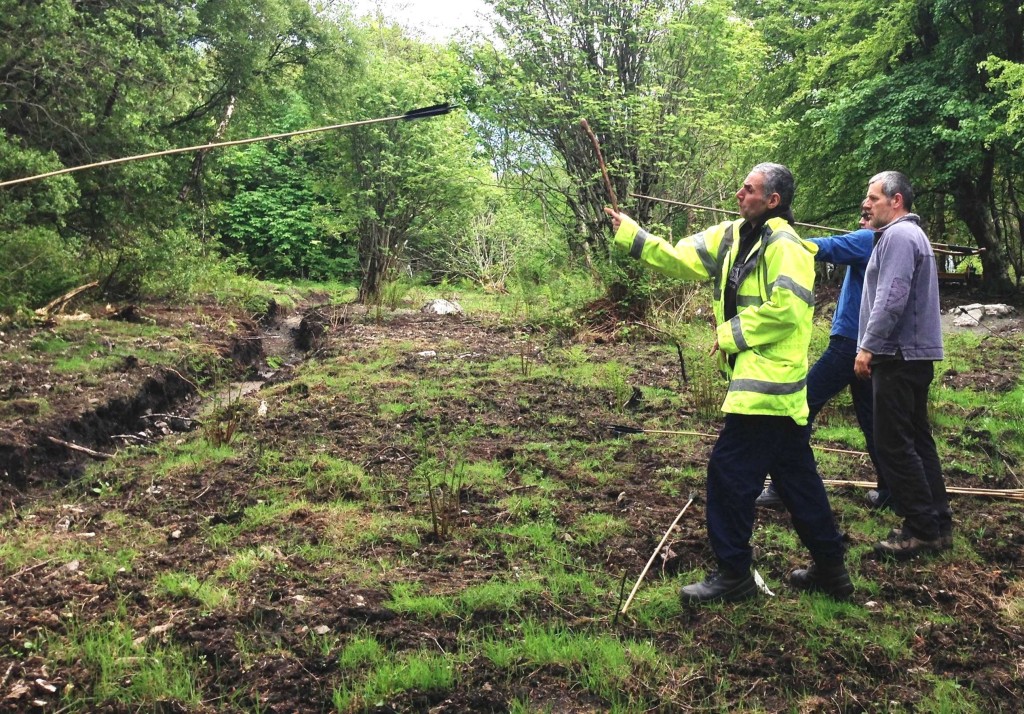
I must in the end thank my sister Tina and John for arranging this day as I had a fabulous time working with everyone in Finlay’s class.
After the day was finished I was really struck by how many of the skills I practise under the title of bushcraft were being practised on a daily basis on the Isle of Lewis just a few generations ago.
Cheers
George
